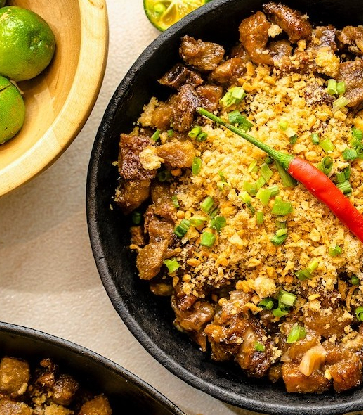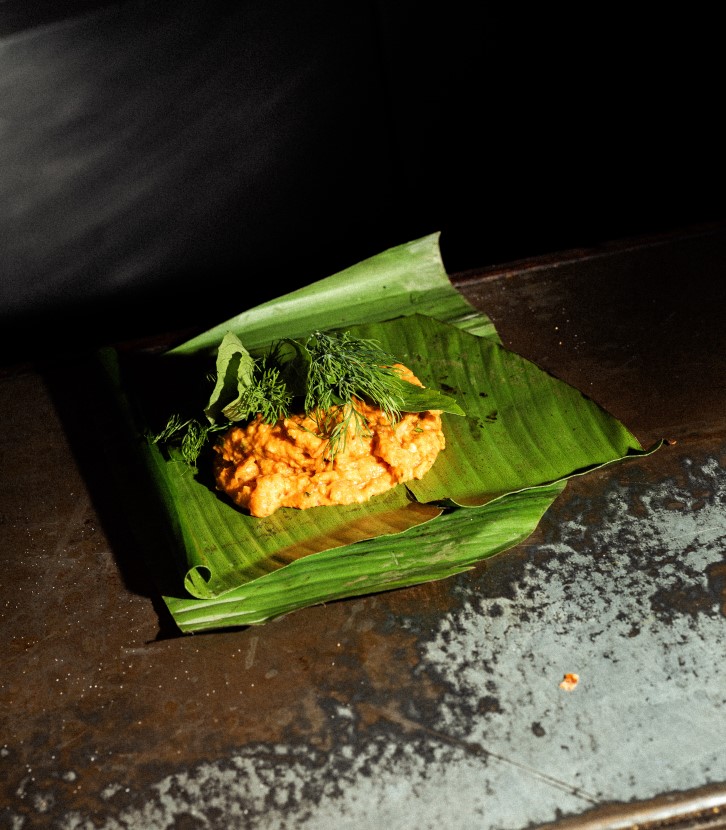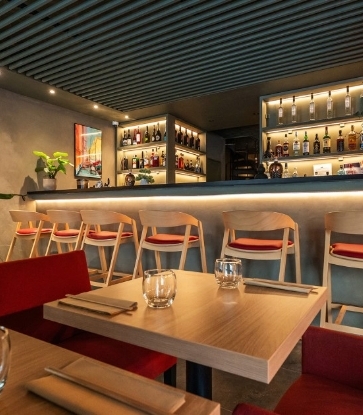Fine-dining restaurants that showcase the best of modern Korean cuisine all have their unique characteristics. Among them, Myomi stands out. Praised by locals and overseas guests alike, it serves sophisticated cuisine that presents the very best from every corner of Korea. Under the guidance of head chef Kim Jung-mook – who started out as a sous chef when it first opened – Myomi received its first star in the MICHELIN Guide Seoul 2020.
"I want to reinterpret the vivid experience of Korean food that people today enjoy, rather than reproduce ancient recipes from the royal court, “ chef Kim explained. “Our kitchen team travels extensively to discover the very best of local cuisine. Then they bring it back to our restaurant where we try to make it more sophisticated.

Kim’s key aim was to let the restaurants’ guests to feel like “they are traveling all over the country”. As South Korea is surrounded by the sea and many mountain ranges, it was difficult for people living in various regions to interact, according to Kim. “The climate also varies greatly from region to region. So if you move from one side of a mountain to the other, you might find that that region’s food, ingredients and culture have developed in quite different ways. This is why Korean cuisine is extremely diverse," he said.
Chef Kim and his team are constantly exploring the most remote places of Korea to hunt down local flavors. Instead of just limiting themselves to the use of a few exotic ingredients, the team is interested in learning more about each region’s food culture, recipes and the techniques local residents prepare the produce indigenous to their area.
Myomi's signature dish is dongchimi, a variety of kimchi that consists of Korean radish, napa cabbage, scallions, pickled green chili, ginger, Korean pear and watery brine. At Myomi, the dongchimi is served cold, and after the main meat course. “Unlike in Western cuisine where the steak signals that the meal is almost over, in Korea it is common to eat the main rice or noodle course afterwards in Korea,” Kim explained. “By serving dongchimi between meat and rice menu, diners can refresh their palate and whet their appetite.”
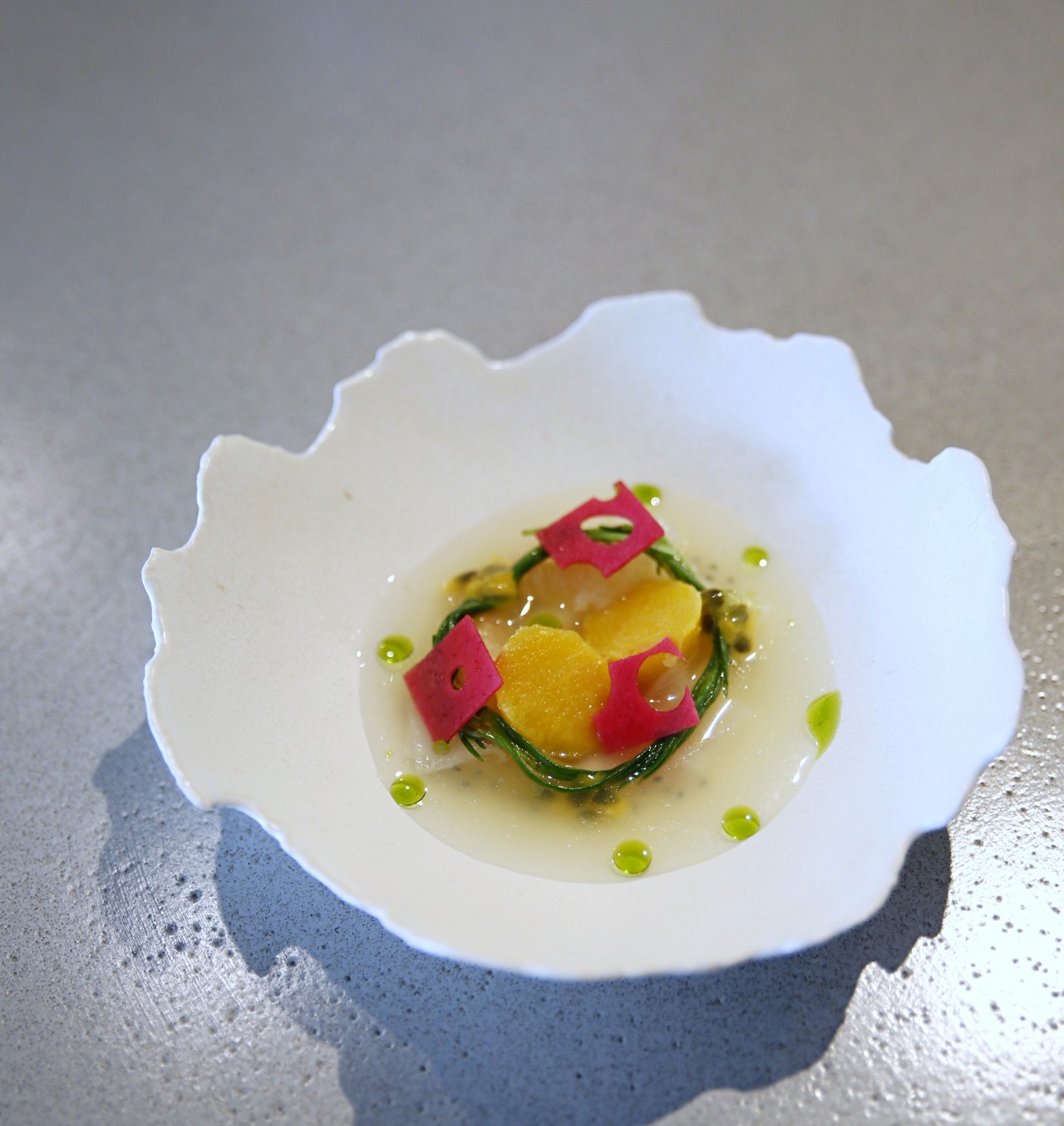
Additionally, Kim likes to blur the lines when it comes to the way he prepares local specialties. “All Koreans remember eating the steamed sweet potatoes with a bowl of cold dongchimi at grandma’s house,” he explains. His version of dongchimi is combined with sweet potato and plated in a rustic manner, which makes it attractive to overseas diners while eliciting heartwarming memories in Korean diners.
Reinterpreting Jeotgal Table D'Hote as Bibim Noodles
As a country surrounded by the ocean on three sides, it is no wonder that Korea has developed various ways of incorporating seafood into their local cuisine. One of these dishes is jeotgal, or fermented fish, that has been enjoyed by people since the Goguryeo dynasty in the 1st century AD. Even a Chinese historical text published in 289 mentions that the Koreans were skilled in making fermented fish paste.
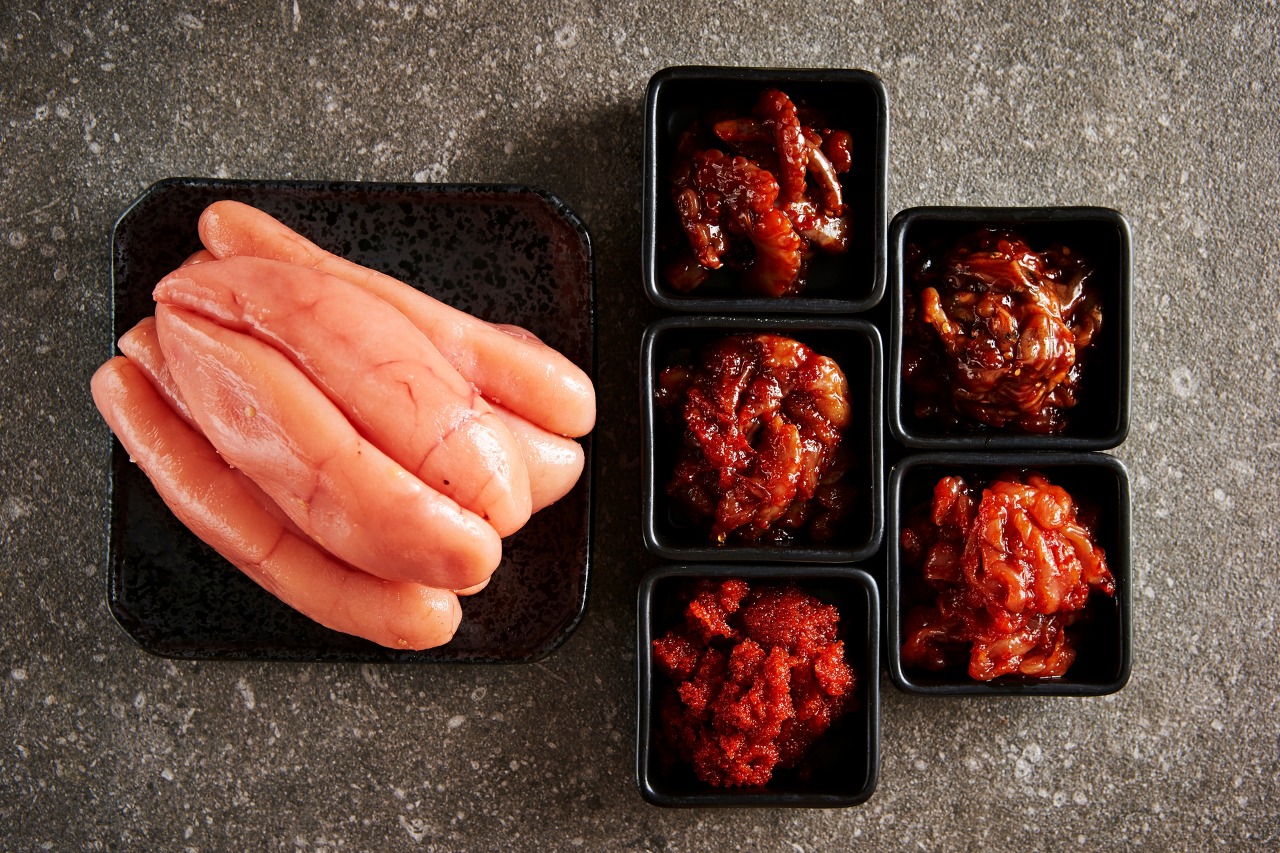
After more than 2000 years, jeotgal is still eaten in a wide variety of ways. The most common way of eating jeotgal is in solid form as a kind of banchan (the side dishes that accompany a Korean meal). Another popular way is to enjoy it in its liquid form – with the addition of garlic, sesame oil and sesame seeds after fermentation – as a sort of fish sauce that is used as a seasoning for soups and kimchi.
During his travels, Kim’s attention was captured by the Korean version of a table d'hôte, or a multi-course meal, which is also called Han-jeongsik(韓定食) in Korean. The Korean-style full-course meal is characterized by an array of small banchan plates in a variety of colors. In the picturesque province of Jeollanam-do in the southwestern part of Korea, Kim describes their local jeotgal table d’hote with numerous varieties of jeotgal – including those made with shrimp, shellfish, oysters, squid, whole fish, fish eggs, and the fish intestines.
“These varieties of jeotgal are all so tasty and appetizing, to the point where Koreans call them ‘rice thief’ as they are so good that it makes people eat more rice in order to eat more jeotgal.”
Chef Kim’s interpretation of jeotgal’ table d'hôte has resulted in a bowl of what he calls “simple noodles”. He broke down the dish into its constituent elements – jeotgal, namul (seasoned herbal dishes) and rice – and then reconstructed it into jeotgal bibim noodles.
In his recipe, plain noodles are seasoned with jeotgal and finished with spring greens. There are hundreds of kinds of jeotgal in Korea, but for this dish, Kim uses galchi-sok-jeot (salted hairtail innards) from Jeju Island and cheongeo-al-jeot (salted herring roe) from Gangwon Province to season the noodles. Galchi-sok-jeot is made with hairtail innards that contain more enzymes than lean meat, and this results in a very strong umami flavor. Think blue cheese rather than mozzarella, according to Kim.
To soften the strong flavor of galchi-sok-jeot, as well as introduce a level of sophistication in both texture and taste, Kim also uses cheongeo-al-jeot, or salted herring roe. This form of jeotgal is made from herring caught in the East Sea of Korea and is an age-old tradition. He explains that the herring eggs are fermented with clean sea salt and fresh radish juice to make its taste very subtle.
This approach is one that has typified Kim and his kitchen team’s philosophy when it comes to developing dishes. “We mix different regional specialties to develop our way of cooking,” he said. “Local cuisine is usually made using ingredients that are only available locally, but once we’re inspired by them, my team and I try to find the best combination by putting ingredients and dishes from other regions together without any limits."
As for what is next in the future of the restaurant, chef Kim thinks the answer is always in the wisdom of food culture. "The inexhaustible nature of Korean food is still reflected in the ways people enjoy local cuisine. As a chef, I still want to study local food that is not widely known and present it in our own way,” he says.
For now, Myomi is preparing to further their research and development of their menu, with a focus on “dragging out” flavors instead of “adding” them on. “I think only simple and focused cuisine can impress the gourmands who are tired of meaningless extravagance. Besides, we’re doing our best to enhance the hospitality and service quality at the restaurant,” he explains.
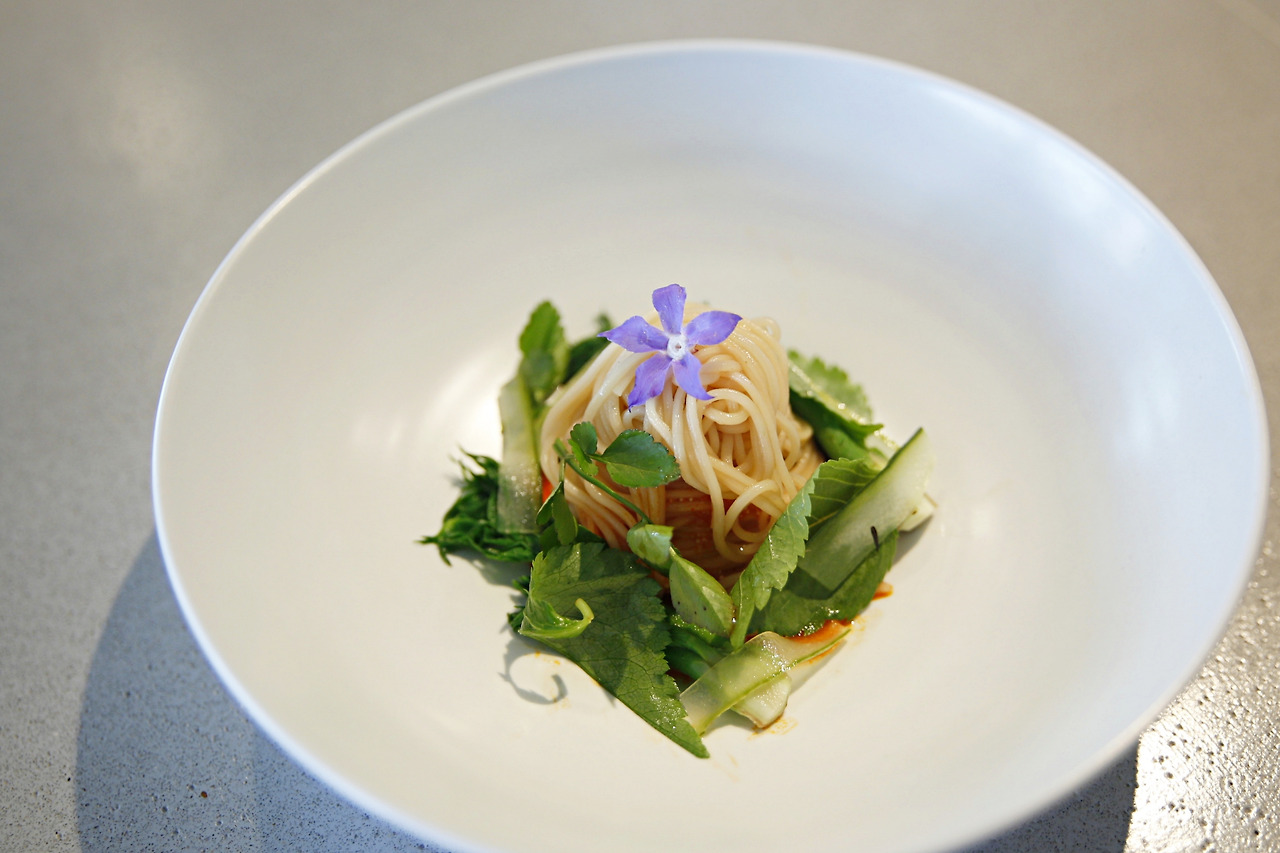
Myomi’s Jeotgal Bibim Noodles
Noodle Seasoning
200g galchi-sok-jeot (salted hairtail innards)
100g cheongeo-al-jeot (salted herring roe)
10ml apple vinegar
40ml soy sauce
20ml perilla seed oil
Noodles
60g noodles (any thin noodles are fine, for example, plain flour noodles, capellini or rice noodles)
Green Toppings
15ml perilla seed oil
30g various spring greens (any vegetables are fine, for example, duoreup, dallae or carrots)

1. Mix the ingredients for the noodle seasoning together.
2. Cook noodles in boiling water for 2 minutes and 30 seconds. Rinse noodles in cold water to cool it down before draining them.
3. Clean and cut the vegetables in your preferred size and blanch them in boiling water for 30 to 60 seconds.
4. Drain the vegetable and mix with the soy sauce and perilla seed oil.
5. Mix the noodles with the seasoning that was prepared in step 1, and put the vegetables on top of the noodles.










